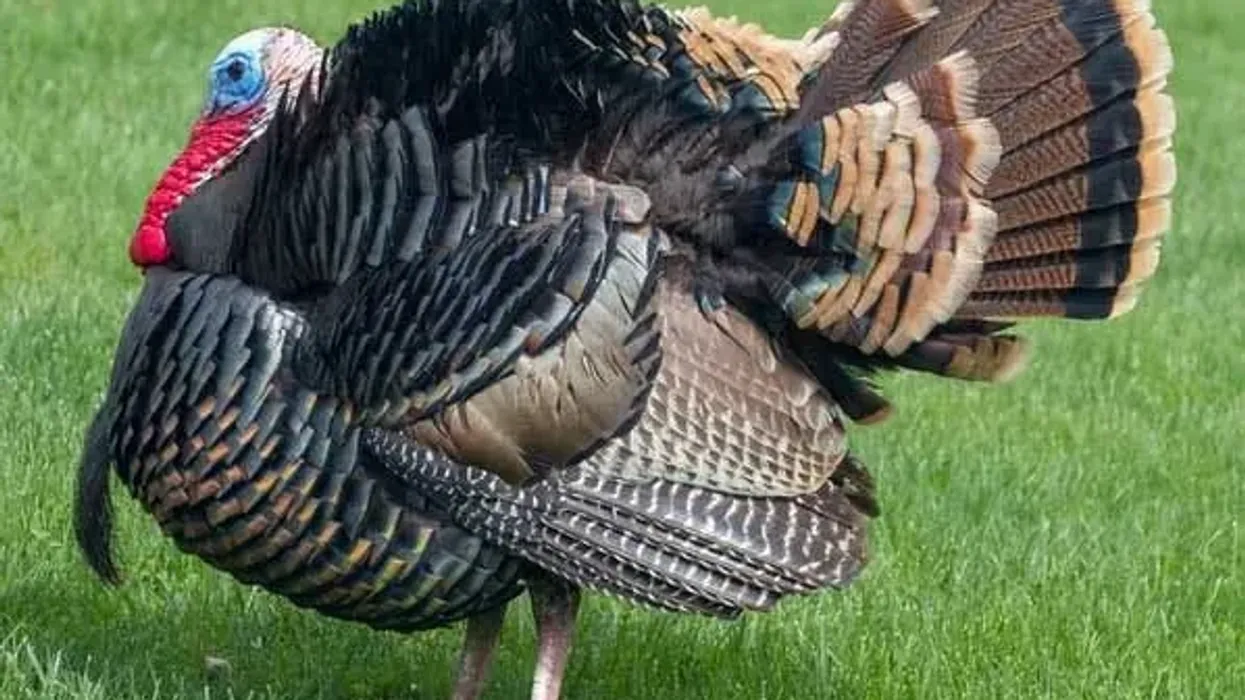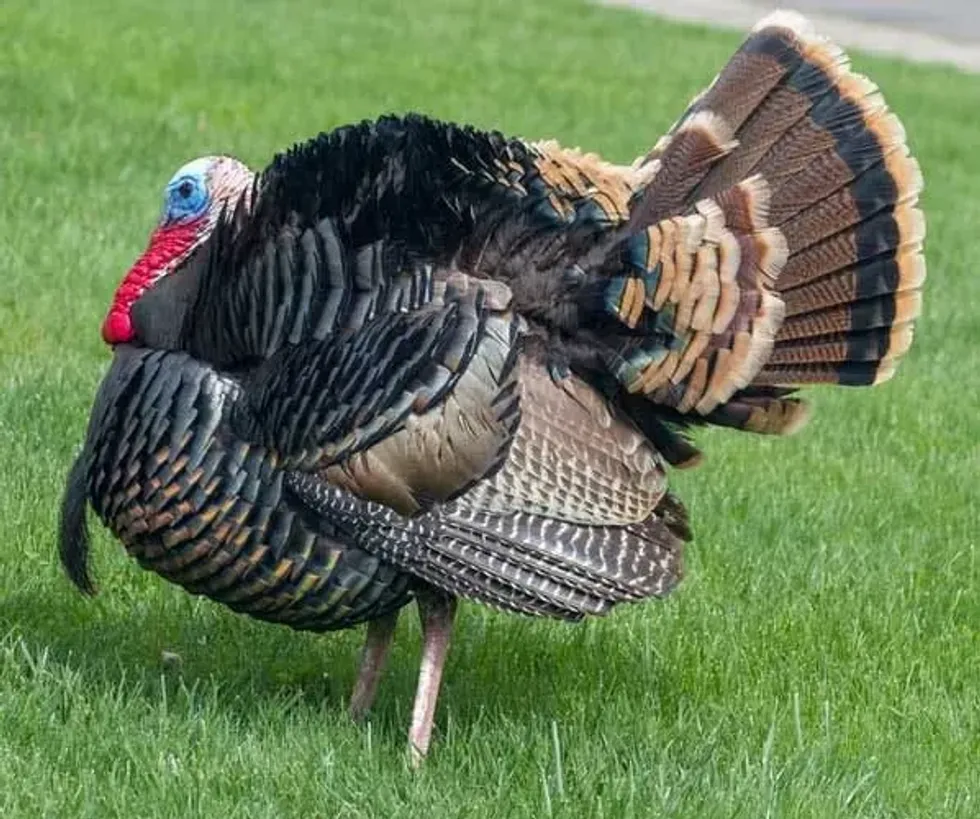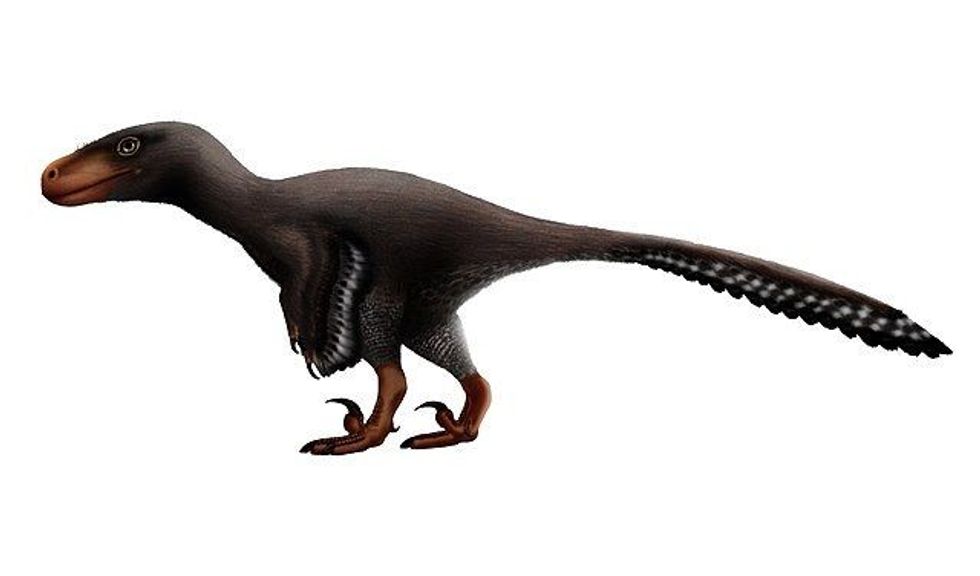The wild turkey (Meleagris gallopavo) is a popular and important game bird. The bird is most well known for its meat being served in Thanksgiving day feasts across America.
The National Turkey Federation (NTF) estimates that approximately more than 46 million turkeys are consumed every Thanksgiving day. Another 19 million turkeys are slaughtered for their meat on Easter and 22 million during Christmas.
It is one of the most popular bird meats in America. According to a 2018 report, Minnesota consumes most turkey meat among all American states, followed by North Carolina, Arkansas, Indiana, Missouri, and Virginia.
Native to America, the wild turkey has been introduced all over the world as a game bird and is frequently domesticated as poultry, along with chicken and fowl, on farms due to their prevalence as meat and in hunting.
There are many different types of turkeys such as Royal Palm turkeys, Norfolk Black, Beltsville Small White, White Holland, and Broad Breasted White turkeys.
There are many ways to cook a turkey. Almost all recipes involve putting a whole unstuffed turkey in a roasting pan and put in a preheated oven with a temperature of around 175 degrees Celsius.
If you like this article and want to read more about animals, read these interesting animal-related articles about the indri and the ostrich.
Turkey Interesting Facts
What type of animal are turkeys?
Wild Turkeys are game birds native to North America with colorful tail feathers.
What class of animal do turkeys belong to?
Wild Turkeys belong to the Aves class of the Animalia kingdom.
How many turkeys are there in the world?
The total population size of turkeys in the world is 6,900,000 birds.Turkeys are native to North America.
Where do turkeys live?
Wild turkeys can adjust to practically any dense local plant community that has openings and coverage. They prefer mixed conifer-hardwood and hardwood forests with distributed openings such as orchards, pastures, seasonal marshes, and fields.
What is a turkey's habitat?
The turkey is found all over North America, especially in Central Mexico, southern Canada, and the United States. Turkeys have also been introduced in New Zealand and Australia.
Who do turkeys live with?
The turkey mainly lives in a flock with its own species. Being social birds, turkeys flock together in large groups.
Several female turkeys and their chicks will join flocks most of the time, so it is quite normal to see more than 50 turkeys flock together. There are also domestic turkeys that live on the farms along with other animals and livestock.
How long do turkeys live?
The turkey has a lifespan ranging up to 13 years. But the annual survival rate of wild turkeys is very low due to consumption on Thanksgiving as well as hunting, motor accidents, and other predators.
How do they reproduce?
Wild turkeys are polygynous in nature, meaning that both the males and females of the species have numerous mating partners. The males try to attract a mate by dragging their wings, spreading out their tails, and puffing out their feathers.
The mating season is March and April, and the females then search for nest sites. The females lay a clutch of around 10-14 eggs, one egg per day. The incubation period lasts for around four weeks (28 days).
What is their conservation status?
The total breeding population size of the wild turkey stands at 6,900,000 birds. Presently, the turkey is classified as of 'Least Concern' on the International Union for Conservation of Nature (IUCN) Red List. The turkey population is quite stable and increasing at a healthy rate.
Turkey Fun Facts
What do turkeys look like?

A turkey has dark feathers, ranging from dark brown to black, with a bronze-green colored plumage. Their wings are dark and have bold white outlines.
Their tail feathers and rump have broad strokes of white or rust colors. The head of a turkey has no feathers and varies in color from bright red to blue to gray. The turkey has an erectile, fleshy protuberance on its forehead called the snood.
Male turkeys are large, round birds with strong muscles and multicolored plumage. They can be easily distinguished from the hens by their thin feathers on the chest, bright facial wattles, the snood, and their tail feathers. The male bird's plumage is very beautiful, having plenty of subtle patterns and a multitude of colors.
The hens are distinctive from their flashy male counterpart. Their plumage lacks bright colors because they need to be camouflaged as they need better security from predators since they are mainly responsible for the incubation of eggs and rearing the poults.
They also have smaller wattles and lack the thin feathers on their chests or the snood. They are also smaller in size compared to the males.
The poults are precocial, meaning that they leave the nests to forage for themselves within days of hatching. They have a fluffy plumage to supply them with insulation like many other young birds. The feathers of their plumages are also colored in darker shades of brown to provide them with camouflage and protect themselves from predators.
How cute are they?
Domestic turkeys are very cute. They are very clumsy animals, colliding with other domestic animals on the farm and falling down frequently. They are very social birds and love to be around children.
How do they communicate?
Wild turkeys have a much-developed communication system that helps them to mate and even avoid danger. They depend on this communication system to survive. The turkeys use many types of vocal sounds such as 'putts', 'yelps', 'whines', 'clucks', 'gobbles', 'kee-kees', 'cackles', and 'purrs.'
The male birds gobble in early spring to declare their presence to females and other competing male birds. These sounds can travel for up to a mile.
The male birds make a low sound that is made by the flow of air in the air sack in the turkey's chest. Male turkeys also emit a sound caused by the sharp ejection of air from the turkey's air sack. This sound is called the spit.
Females turkeys let out a call known as yelp to let male turkeys know their location. Male turkeys that are less than a year old also yelp.
How big are turkeys?
The adult male turkey measures up to 39 in - 49 in (99 cm - 124.5 cm) in length. The adult female turkey measures much less at 30 in - 37 in (76 cm - 94 cm) in length.
How fast can turkeys run?
When spooked or threatened, turkeys can run up to great speed at 25 mph (40.2 kph).
How much do turkeys weigh?
The adult male turkey normally weighs from 11 lb - 24 lb (5 kg - 11 kg), while the adult female turkey weighs much less at 5.5 lb - 12 lb (2.5 kg - 5.4 kg). But according to the National Wild Turkey Federation, the record-sized adult male wild turkey weighed to be 37.1lb (16.85 kg).
Then there are tom turkeys which weigh over 30 lb (13.8 kg). These are uncommon but not rare.
What are their male and female names of the species?
The male birds that are more than one year old are called 'toms' or 'gobblers', and less than one year old are called 'jakes.' The female turkeys that are over a year old are called 'hens,' while the birds that are less than a year old are known as 'jenny.'
In the farm business, turkeys that are less than 16 weeks of age are called 'fryers,' and those that are five to seven months old are known as 'roasters'.
What would you call a baby turkey?
Baby turkeys are called 'poults.'
What do they eat?
Wild turkeys live in forests that provide ample quantities of fruits, masts, and nuts of woody plants. They feed on berries, fruits, seeds, and insects in the fall season and feed on grass and leaves during the spring.
In winters, acorns are the main source of nutrients for turkeys. Dogwood, wild cherries, berries, grapes, and beechnuts are also preferred food for wild turkeys.
Are they aggressive?
Wild turkeys become habituated to humans and food offered by humans, such as birdseed. As a result, the turkeys very quickly shed their fear and inhibition around people.
This gives rise to aggressive behavior among turkeys as they attempt to damage things or dominate their owners. Once this bold behavior gets established, it gets very difficult to tame them again. Wild turkeys that regularly test or attack individuals need to be put down ultimately.
Would they make a good pet?
Turkeys are very social animals and become quite attached to their owners. They follow their owners around everywhere and love to be pet, and try to attract the attention of the owners in many ways, such as sitting on the feet.
Some males can be territorial, but most domestic turkeys are usually docile. Hence, this bird is great around children and a good pet to have.
Did you know...
Turkeys are usually housed with other domesticated birds such as chickens and fowl. However, some precautions need to be taken as diseases such as blackheads affect turkeys very commonly. The disease can be transmitted to the other animals in the poultry, and hence they needed to be housed independently.
It is a popular assumption that the turkey cannot fly. In fact, turkeys can fly, and wild turkeys are very powerful fliers. When spooked, a turkey can fly as fast as 55 mph (88.5 kph) with the help of its broad, round wings.
After encountering the wildlife of the New World, the wild turkey was noticed by the European settlers as quite similar to game birds back in Europe. When they returned, they took the birds back to Europe with them in 1519.
They soon became highly prized because of their unparalleled flavor. European pilgrims brought domesticated European turkeys back to the New World in the mid-seventeenth century.
A group of turkeys is known as a rafter.
What is a famous myth about turkeys?
One of the most famous myths about turkeys involves one of the American Founding fathers, Benjamin Franklin himself! The partially fake news begins with Benjamin Franklin writing a letter to his daughter, comparing the turkey with the bald eagle which is on the American Great Seal.
He stated that the American bald eagle, which is the national bird, is a bird of bad moral character who survives by living dishonestly.
Franklin stated that compared to bald eagles, turkeys are the original native of America, are much more respectable, and a bird of courage. But he did not propose that turkeys should be engraved on the American Seal or to make it the national bird of America.
How can you tell the gender of a turkey?
Turkey's droppings can be frequently used to ascertain the gender of the bird. Males tend to drop excretions that are long and shaped like the letter J.
Females, on the other hand, tend to excrete poop that looks like the shell of a snail and is shaped like a spiral blob.
This contrast arises due to the different internal anatomical structures of the two sexes of the bird. The male turkeys possess a rudimentary internal sex organ which is located close to the waste stream, thus affecting the shape of their droppings.
Here at Kidadl, we have carefully created lots of interesting family-friendly animal facts for everyone to discover! Learn more about some other birds, including the harpy eagle and Cooper's hawk.
You can even occupy yourself at home by drawing one of our turkey coloring pages.










